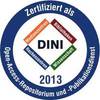Preview |
PDF, English
- main document
Download (16MB) | Terms of use |
Abstract
Background: Since approximately 40% patients with advanced melanoma fail to respond to the otherwise very efficient treatment with immune checkpoint inhibitors (ICI), the role of the tumor microenvironment (TME) in the treatment failure is currently under thorough investigation. In our literature review, I have presented the impact of the various TME actors on the ICI efficiency. In addition, promising strategies for combination treatment of ICI with neutralization of the immunosuppressive TME and other combination treatments currently under investigation were discussed. Despite the growing evidence that the accumulation of myeloid-derived suppressor cells (MDSC) in advanced melanoma patients undergoing ICI therapy is associated with poor survival and response rates, neither the dynamic changes in the MDSCs immunosuppressive pattern and their activity under ICI therapy nor the effect of ICI blockade on MDSC as an adjuvant treatment in patients with no measurable metastases has been understood. Experimental Design: To answer these questions, I investigated dynamical changes in MDSC characteristics and in the concentration of MDSC-related soluble inflammatory factors in peripheral blood mononuclear cells (PBMC) and plasma from 29 melanoma patients undergoing ICI treatment. MDSC frequency, immunosuppressive phenotype and their suppressive function were compared between metastatic and non-metastatic patients as well as between responders and non-responders to ICI in order to identify biomarkers of response. MDSC characteristics were analysed by flow cytometry, their suppressive activity by inhibition of T cell proliferation assay and chemokines concentration by bio-plex assay at the different time points before and under the ICI treatment. Results: A significant increase in MDSC frequency prior to the start of ICI treatment was observed in non-responders compared to responders. In addition, the amount of MDSC in patients who failed ICI remained significantly higher during the first three ICI applications compared to responding patients. At the time point prior to ICI treatment, high suppressive activity of MDSC was observed in non-responders, while MDSC from responders showed no immunosuppressive activity. Moreover, it was found that MDSC from patients without visible metastasis fail to inhibit T cells at any investigated timepoint during the therapy. IL-6 and IL-8 levels were also found to be significantly elevated only in the plasma of non-responders before and after initiation of ICI treatment. Conclusion: These findings highlight the role of MDSC during melanoma progression and their limiting effect on ICI efficiency. I suggest that increased MDSC frequency, high suppressive activity of MDSC and high plasma levels of IL-6 and IL-8 determined in the peripheral blood of melanoma patients prior to treatment initiation indicate a poor response to ICI therapy and may be used as negative predictive factors for response to ICI therapy. These findings should be validated in a larger patient cohort in the future.
| Document type: | Dissertation |
|---|---|
| Supervisor: | Utikal, Prof. Dr. med. Jochen |
| Place of Publication: | Heidelberg |
| Date of thesis defense: | 18 March 2025 |
| Date Deposited: | 28 May 2025 12:04 |
| Date: | 2025 |
| Faculties / Institutes: | Medizinische Fakultät Mannheim > Hautklinik Medizinische Fakultät Mannheim > Mannheim Cancer Center |
| DDC-classification: | 610 Medical sciences Medicine |
| Controlled Keywords: | myeloid-derived suppressor cells, immune checkpoint inhibitor, melanoma |









